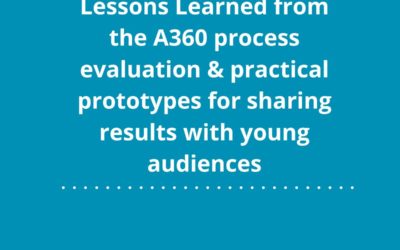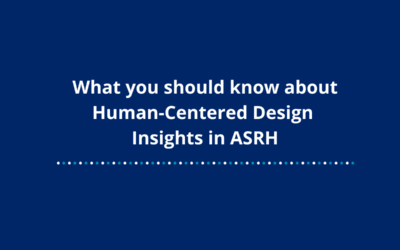Purpose
A deep dive into Quality & Standards in HCD +ASRH and the role that quality plays in HCD+ASRH programs.
 Presenters
Presenters
Madiha Latif
Program Manager, Beyond Bias, Pathfinder, Pakistan
Dr. Tabinda Sarosh
Country Director, Beyond Bias, Pathfinder, Pakistan
Aïssatou Dione
UX Researcher, YUX, Senegal
UX Researcher, YUX, Senegal
Mireille Umutoni Sekamana
Designer, YLabs, Rwanda
Michael Kamiru
Programme Analyst, CIFF Africa Office
Nicole Ippoliti (Moderator)
Director of Global Programs, YLabs
What does quality mean to you in your programs and how does this influence your work?
Insights from Madiha Latif
- It means the representation and inclusion of those that we want to benefit. Everything that we do is evidence driven, using best practices and it is an informed process.
- Reflecting from the experience of Beyond Bias – we ensured the inclusion of everybody including the stakeholders in the design process and this really informed the design that we tested. Their insights, their needs, their feedback was all at the center of the solution.
- Quality means a more empathetic and informed way of programming but it also affects the other ways that we work as well.
Insights from Aïssatou Dione
- Quality is involving the concerned people in all the activities and all the products so that solutions can be built in accordance with what the concerned groups of people need.
- How to transmit the quality in the data you receive, and how do you transmit this data that has been collected.
- We should be able to look back at the areas of frustration and barriers so that we can use data from collaborators and improve the solutions.
“Sometimes you have to go beyond the scope of the project but it plays a role in the project because it tries to make sure that their needs are met.” – Madiha Latif
“Redefining the way that we think about the designing of a solution. Continue to think about the design even through implementation. Implementation should not be a static period. It should evolve and change to learn from the concerned group of people that it is designed for”.
– Nicole Ippoliti
What HCD methods, approaches, values are you proud of? how do you share these in your work?
Insights from Michael Kamiru
- At CIFF our core motto is problem solving. We have detailed discussions with the beneficiaries of these programs. So that when we design programs we have ensure a HCD component that gives a higher chance of success.
- In the Chase for Change program with MSI we realised that young people were not accessing SRH services because of stigma service provider bias. Through an HCD process we managed to make some changes to the program that included: 1) training of SRH providers; 2) establishing youth friendly centers within service provision; and 3) users wanted these services to be provided after clinic hours so we had to redesign the whole work to ensure their views to provide services post work hours and on Sundays.
- Designing with youth has a huge impact in terms of guaranteeing success.
Insights from Dr Tabinda Sarosh
- The one piece of advice I would give to someone about HCD is to constantly seek to improve your solution. Even if the product has enough work done on it, being willing to move away from it and create something that really works, especially for young people is important.
- When we were piloting one of our programs in Rwanda to provide SRH information to people aged 12-19, we had a system that was already done. We felt that we had spent so much time refining all the functionalities but when we talked to the young people we realised they wanted to simplify some aspects for them to use. So we had to go back to understand how the platform could still deliver to while making it easy for these young people to use in their everyday lives.
In HCD, there’s a lot of encouragement for experimentation and failure. What are ways that we can hold quality constant, while still promoting a supportive culture for experimentation and failure?
Insights from Michael Kamiru
- Consistency of communication: Constantly and consistently engaging with our beneficiaries. Alot of consultations with the beneficiaries. Especially during current CoVID times.
- Feedback loops: Getting constant and consistent feedback from all stakeholders is critical.
- Inclusivity: Assuring that all stakeholders we are targeting to engage are diverse – tribe, sex, power situation, access to technology
Insights from Madiha Latif
- We had a pause period in between our HCD design. There was a lot of talk about the data that was being collected during the pandemic because of the uncertainty that was surrounding us.
- We created a connection group with youth and enumerators and encouraged them to create their own networks so that they could connect other young people to health services. We initiated mental health and well-being sessions for young people. This ensured that there were linkages to menstrual health products. The youth and numerators were not just data collectors they were included in the design and implementation.
 Spotlight Audience Question
Spotlight Audience Question
Do any of the panelists have experience with using participatory design such that young people help define what to make, how to make it and why to make it that way — from the earliest phases of the design process?
Response from Mireille Umutoni Sekamana
In early stages of the project young people were more interested in how they can have a better future, succeed in school etc. Their aspirations were not around SRH. We had some content creation workshops and journey mapping with young people and we were able to understand what young people were interested in. We went in not just with SRH content but also talking about things that they were interested in and then bringing in SRH topics through that and how it might affect their lives.
Response from Aïssatou Dion
What we do is in the beginning show them the necessity of what we are doing. We start to talk to young people about menstruation and from there we have individual discussions. In our country young people do not always have the possibility of saying what they want, so when we give them the possibility of saying what they really want they discuss openly, we did not know their vocabulary, terms that they use. Working with them has helped us learn their vocabulary. We work with them and give them a chance to use their own vocabulary. Doing this is important because this gets their confidence and helps them open up more.



